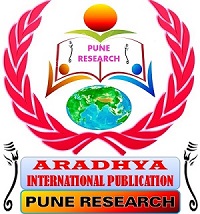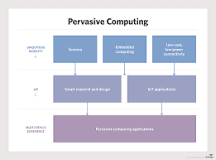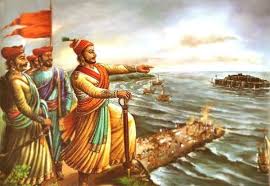VOL 2 ; ISSUE 3 - PUNE RESEARCH SCHOLAR (ISSN 2455-314X) JIF 2.46
2.3
Area of Article : ALL

VOL 2 ; ISSUE 3 - PUNE RESEARCH SCHOLAR (ISSN 2455-314X) JIF 2.46
2.3

VOL 2 ; ISSUE 3 - PUNE RESEARCH SCHOLAR (ISSN 2455-314X) JIF 2.46
2.3.1

Statistical Process Control (SPC) methods have been widely recognized as effective approaches for process monitoring and diagnosis. Statistical process control provides us of the statistical principals and techniques at every stage of production. Statistical Process Control (SPS) aims to control quality characteristics on the methods, machines, Products equipments both for the company and operators with Magnificent seven, some simple techniques like the “seven basic Quality Control (QC) tools” provide very valuable and cost effective way to meet these objective .H however, to make them successful as cost effective and problem solving tools, strong commitment from top management is required. Statistical process control (SPC) is one of the important tool in quality control (QC). In order to survive in a competitive market, improving quality and productivity of product or process is must for any company.
Key Words: Statistical process control (SPC), Statistical quality control (SQC),Quality improvement, Quality tools and control charts.
VOL 2 ; ISSUE 3 - PUNE RESEARCH SCHOLAR (ISSN 2455-314X) JIF 2.46
2.3.2

Teaching
must include two major components sending and receiving information. The
ever-growing need for good communication skills in English has created a huge
demand for English teaching around the world. Millions of people today want to
improve their command of English or to ensure that their children achieve a
good command of English. Moreover, opportunities to learn English are provided
in many different ways such as through formal instruction, travel, and study
abroad, as well as through the media and the Internet. The worldwide demand for
English has created an enormous demand for quality language teaching and
language teaching materials and resources. Learners set themselves demanding
goals. The demand for an appropriate teaching methodology is therefore as
strong as ever.
This paper deals with the traditional and innovative methods and approaches of teaching which are critically examined, evaluated and some modifications in the delivery of knowledge is suggested. As such, the strengths and weaknesses of each teaching methodology are identified and probable modifications that can be included in traditional methods are suggested. It is also examines the present scenario of English language teachers as regards Information Communication Technology (ICT) integration and tries to determine if ICT skills of English language teachers in the light of existing infrastructure facilities are adequate to promote English language teaching and learning.
Keywords: Innovative, Communication, Technology
VOL 2 ; ISSUE 3 - PUNE RESEARCH SCHOLAR (ISSN 2455-314X) JIF 2.46
2.3.3

The aim of this paper is to explore historical roots
and basic themes of existentialism. The paper foregrounds the old philosophical
controversy between existence and essence. In this paper I shall try to examine
the basic themes, facts and arguments put forwarded by the existential
philosophers. It also highlights main features of existential philosophy
including uniqueness of man and his freedom which is unfettered and
unrestrained. The paper may try to indicate the fact
that existentialism is the only philosophy which considers individuality as supreme
and emphasizes the importance of man as an individual rather the man in
general. In general terms the paper may be approached and discussed how
existentialism can be described as an attempt to reach the inmost core of human
existence in a concrete and individual fashion.
Key notes: Existence, Essence, Freedom, Contingency, Anguish and Absurdity
VOL 2 ; ISSUE 3 - PUNE RESEARCH SCHOLAR (ISSN 2455-314X) JIF 2.46
2.3.4

Sahitya
Akademi Award winning Playwright Mahesh Dattani has been dealt the foremost
theme of communal disharmony in his play ‘Final Solutions’, which shows his
objective and unbiased attitude towards communal differences. It has become controversial
in its production time because it deals with the sensitive issue of communal
tensions after Babri Mosque Demolition event which haunts and damages the
secular fabric of the country. The play ‘Final Solutions’ foregrounds the
Hindu-Muslim divide, the prejudices and the deep rooted mistrust that lies just
beneath the skins of our liberal, secular attitudes.
Key Words: Communal Riots, Secularism
VOL 2 ; ISSUE 3 - PUNE RESEARCH SCHOLAR (ISSN 2455-314X) JIF 2.46
2.3.5

The basic human instinct
to communicate has been source of origin of language. The human civilization
progressed over the ageis, the communication need, the human instinct developed
to meet emotional, physical and day to day needs. The mobile communication
proved a boon to replace complex immobile telecommunication: bound and limited
mobility, inadequate infrastructural facilities and administrative apathy to
the consumers demand. The communication speed, irrespective of their position
mobilized, revolutionized the lives of the common man. The speed, mobility,
immediate communication establishment changed entire concept of business,
transaction, and beneficially opportunities. The geographical location of
Jawhar is in Sahyadri mountain ranges, with inconvenient locations to build roads,
tracks and to reach remote villages is a challenge to government,
administration, and local bodies. The users are using mobile to just
communicate on phones than any other services. The most probable reason for
basic call service is absence of infrastructure for the service providers to
avail the amenities of internet services. The Tata internet services are rather
affordable than yet the poor network conditions rather denounce the connection
in this Tribal region. The impact of mobile communication is bound to be
hundred percent, yet the business related application is just 10 % users use
for business and commercial purposes. The cell phones are 67.00 percent simple
cell phones and 32.00 percent Smart Phones. The youths are having these phones
at hands to use net services through smart phones, do transaction on online,
purchases. The internet users are just 34.37 percent and those who could not
are near 66 percent. However, they are living in backward, rural, tribal
region, the mobile eradicated their complexes to feel the elevation in society
and competitiveness. The opinions and
affirmation to the question about speedy life certainly is a communication
development and social mobilization to effectuate timely work. The call
details, apps, are favourite usages to younger generation. The data services
are not available in the interior parts of Jawhar Taluka.
VOL 2 ; ISSUE 3 - PUNE RESEARCH SCHOLAR (ISSN 2455-314X) JIF 2.46
2.3.6

Chetan Bhagat
has dealt with such burning problems like expensive education, lack of
advancement in less significant town, conventional approach fanaticism in
politics, fraudulent, politicians and religious extremism chauvinism towards
agnostics and atheists poverty amid the brighter lower-middle course group
youth, extreme contest in access exams for college admissions, rift between
religions, castes, conservative mentality of parents etc. “The Three Mistakes
of my life” is the third novel by Chetan Bhagat. In it author portrays scores
of problems which we comprise been facing in India and which are making the
Indian youth heedful and sentient of some biggest problems that pestilence our
society. But finally the novelist shows
us in an optimistic way not to this condition by depicting people like Govind,
Ishaan and Omi comprehend the real value of life and mean to do well for India.
Key Words – Fanaticism, chauvinism, heedful and sentient
VOL 2 ; ISSUE 3 - PUNE RESEARCH SCHOLAR (ISSN 2455-314X) JIF 2.46
2.3.7

The Scheduled Tribes constitute around 10.23% of the total population in the state of Goa. The Constitutional safeguard Provisions have brought about changes in their position, and still they are face anxiety with a number of challenges in society. The women belongs to Scheduled tribes Communities are hardworking compared to tribal men in the state of Goa. They contribute significantly towards their family income, but their income generating sources are limited. As a result the children belong to scheduled tribe communities are unable to get higher education after post liberation of Goa. Despite, the constitutional protection and assurance, their status is found to be lower than the women of the General Population in Goa. This paper has been discus about the status of tribal women in the term of their health, Education and Employment etc.
The present paper deals with the Statues of women among the Scheduled Tribes in Goa. This is based on books, journals, newspaper, and websites. The data from “Mand” of GKUVD (Gawda, Kunbi, Velip and Dhangar Federation) of Goa is also used here.
Keywords: Safeguards, Education, Empowerment, Challenges, Status.
VOL 2 ; ISSUE 3 - PUNE RESEARCH SCHOLAR (ISSN 2455-314X) JIF 2.46
2.3.8

African
American playwright August Wilson has offers significant visions in his plays.
Four hundred years ago, Africans were captured by white slavers and shipped
across the Atlantic Ocean to the America; they have since then written their
traumatic history. African Americans today cannot access their initial tragedy
four hundred years ago because those Africans did not have a common language,
neither a written language nor a witness. However, this horrifying
transatlantic experience has scarred the black psyche. Some racial writers
describe this deplorable experience, accusing whites of their malice in causing
such inerasable horrific memory in them, for example, Amiri Baraka’s Slave
Ship. However, August Wilson in Gem of the Ocean sets an aura on this sad ode
of the black trauma, transforming thousands of Africans lying at the bottom of
the Atlantic Sea into the Bones people in the shining Bones City singing the
song of their triumph. This paper is also analyses the representation of
African Americans in the play and how the play transforms the trauma and
teaches blacks to rebuild themselves and to reconnect themselves with their
history of the slaves‟ voyage in the Middle Passage four hundred years
ago.
Key words: August Wilson, Gem of the Ocean, Racial.
VOL 2 ; ISSUE 3 - PUNE RESEARCH SCHOLAR (ISSN 2455-314X) JIF 2.46
2.3.9

Security Industry has always been an evolving profession, but technological advancement in the past 10 years have accelerated that change and dramatically altered the landscape of crime. Security industries are now expected to protect and prevent their community members from local offender’s committing traditional crimes, as well as computer hackers. This new cyber threat has developed so quickly that local security agencies haven’t had time to fully prepare themselves and identify their role in preventing and investigating cyber crimes that are committed. The IT infrastructure provides transmission and storage of gigantic amounts of critical information used in each domain of society and it enables government and private agencies to speedily interact with each other as well as with industry, citizens, state, local governments and across international boundaries. As technology increases the more people are connected and shared their information through internet. The chances of misusing their information also increases hence here comes a new name to a crime that is cybercrime. Cybercrime being global and a very big threat now a days for all over the world, generally affects the person far away from the place of offence. The paper focuses on various types of cyber crime, role of security industry, challenges faced by people, security industry and government related to cybercrime in India.
Key Words: Security Industry, Cyber crime, Challenges, Cyber security, law enforcement agencies etc.
VOL 2 ; ISSUE 3 - PUNE RESEARCH SCHOLAR (ISSN 2455-314X) JIF 2.46
2.3.10

Abki Baar….Modi Sarkar….!!!!! The Naara of the Era…belonged to none other than our charismatic and dynamic Neta: Shri Narendra Modi. The nation awaited his reign on the throne of the political kingdom in 2014. It was the time where he left any icon or superstar behind and became the heart throb of millions of common men of the nation. Since taking office as Prime Minister, Modi's administration has focused on reforming and modernising India's infrastructure and government, reducing bureaucracy, encouraging increased foreign direct investment, improving national standards of health and sanitation and improving foreign relations. Earlier, as Chief Minister of Gujarat, Modi's economic policies (credited with encouraging economic growth in Gujarat) have been praised too.
Narendra Modi, the present Prime Minister, swept into power in 2014 and laid the foundation of a complete new era of the Indian economy and civilization with aims to reboot the lethargic economy, control and stamp out the widespread corruption from the country and increase foreign investment by simplifying the complex regulatory regime.
The Modi government has entered successfully and confidently into its third year of governance. There are some parameters of economic growth where the country has successfully overcome all the barriers and progressed. But certain sections have remained untouched and some problems are unsolved. This paper is an attempt to analyze the achievement of the government with the help of some economic and non economic parameters.
Key words: GDP, Inflation, Economic Growth, FDI, The Modi Government
VOL 2 ; ISSUE 3 - PUNE RESEARCH SCHOLAR (ISSN 2455-314X) JIF 2.46
2.3.11

Interpersonal
skills are crucial at work. It is necessary to have well balanced interpersonal
skills that allows to one to handle any situation gracefully. Interpersonal
skills are the tools people use to communicate with other individuals in an
organizational environment. Images
reflect or project the immediate effect of appearance, attitude, behavior,
confidence, work ethics, life style, belief system, core values etc. of a
person. It is said that it takes 7 second to judge a person after interaction
which imprints the first impression. Well-honed interpersonal skills enable us
to be optimistic, calm, confident and charismatic. A good and effective
interpersonal skill improves many aspects of our life, professionally as well
as socially to lead better understanding and established good relationship. It
teaches us how to negotiate with others, broadening the way to have mutual
respect, trust, understanding etc. In addition to that, it also explores and
analyses various options to get sound decisions. It maintains the frame work at
workplace to identify, define and solve many problems. To maintain good and
firm relationship with others, the mutual understanding is needed and for this,
mental state of a person plays a vital role. The different mental state is
explained by Eric Berner’s framework to determine the different ego state of
parent, adult and child. These different state of mind exemplifies to bridge
them together for harmonious state of being with a noble coordination amongst
them. This later helps in building up a good rapport.
Keywords: Negotiation skill, Decision making skill, Problem solving, Eric Berner’s framework, Building rapport.
VOL 2 ; ISSUE 3 - PUNE RESEARCH SCHOLAR (ISSN 2455-314X) JIF 2.46
2.3.12

Nowadays, businesses often find that they
spend considerable time, effort, and money to train an employee only to have
them develop into a valuable commodity and leave the company for greener
pasture and it is agreed and analyzed it is due to one and only the
organization’s inability to formulate and implement strategies capable of
recruiting competent employees and retaining them to achieve organizational
goals.
This is the core issue in any organization and is a continuous ongoing effort in identifying to keep all the best performers irrespective of their age and encouraging employees to remain in the organization for a long period of time and it is termed as employee retention. It is a process in which the employees are encouraged to remain with the organization for the maximum period of time or until the completion of the project. Therefore, for an organization to realize its goals, appropriate strategies for employee recruitment and retention are upshot for enhanced performance.
VOL 2 ; ISSUE 3 - PUNE RESEARCH SCHOLAR (ISSN 2455-314X) JIF 2.46
2.3.13

Information
practices and learning strategies known as Knowledge management are gaining
importance in Education. The
democratization of data and sharing of information induces people to
contribute, participate, to interact, to learn and grow allowing them to
achieve their goals. The Author explores
how education industry can promote knowledge management initiative. The
researcher has tried to understand how Organization culture, Employee
participation and Information and communication technology impact Knowledge
Management Initiatives in Education Industry.
Keywords: Knowledge Management Initiatives, Organization culture, Employee participation, ICT, Education Industry.
VOL 2 ; ISSUE 3 - PUNE RESEARCH SCHOLAR (ISSN 2455-314X) JIF 2.46
2.3.14

Solid-waste management is a multidimensional issue that incorporates political, institutional, social, environmental, and economic aspects. Improving SWM in developing countries requires efforts to raise public awareness, increase funding, build expertise, and invest in infrastructure. To make progress communities will need to embrace new systems for SWM that are participatory, contextually integrated, complex, and adaptive.
Keywords Solid, Growing, Health
VOL 2 ; ISSUE 3 - PUNE RESEARCH SCHOLAR (ISSN 2455-314X) JIF 2.46
2.3.15

Organizational behavior as the study and comprehension of individual and bunch behavior and examples of structure so as to help progress organizational execution and adequacy, work environment deep sense of being is a developing concern for an expanding number of organizations, representatives, and work seekers. In today's tumultuous business scene a developing number of individuals are looking to the work environment to satisfy their otherworldly needs, while organizations are finding positive work conclusions connected with a working environment that increases laborers otherworldly satisfaction. There is to date, in any case, small research concerning the relationships between culture, individual contrasts, and work environment most profound sense of being.
Keywords Cultural, Environment, Organization
VOL 2 ; ISSUE 3 - PUNE RESEARCH SCHOLAR (ISSN 2455-314X) JIF 2.46
2.3.16

Airport retailing is a way forward
for retailers around the world and India is no exception. Ths format of retail
is in its initial stage in India but it has seen an early growth and ranked
amongst top ten destinations in the world for Airport Retail. The present paper
discuses major factors contributing to the growth of airport retail in India. The
study included secondary data collected from different sources such as
journals, books, magazines etc. the study concluded that size of Indian middle class increasing
urbanization, rise in size of air travel, low cost carriers and modernization of airports are the
factors contributing to the growth of this sector.
Key
Words: Airport Retail, Travel Retail, Indian Airports
VOL 2 ; ISSUE 3 - PUNE RESEARCH SCHOLAR (ISSN 2455-314X) JIF 2.46
2.3.17

Pervasive computing systems are likely to be
deployed in the near future, with the proliferation of wireless devices and the
emergence of ad-hoc networking as key enablers. Coping with mobility, the
volatility of wireless communications in such systems is critical. Neighborhood
Discovery (ND), namely, the discovery of devices directly reachable for
communication or in physical proximity, becomes a fundamental requirement and a
building block for various applications. However, the very nature of wireless mobile
networks makes it easy to abuse ND and thereby compromise the overlying
protocols and applications.
This paper describes about the recent research topic Pervasive Computing which focusses on the characteristics, architecture, issues and challenges. The pervasive architecture relates how the end-user interacts with the pervasive network using the middleware support. Finally, it describes about the future focus for pervasive computing through the real time applications. It first examines the relationship of this new field to its predecessors: distributed systems and mobile computing. It then identifies four new research thrusts: effective use of smart spaces, invisibility, localized scalability, and masking uneven conditioning. Next, it sketches a couple of hypothetical pervasive computing scenarios, and uses them to identify key capabilities missing from today’s systems. The paper ends with a discussion of the research necessary to develop these capabilities.
VOL 2 ; ISSUE 3 - PUNE RESEARCH SCHOLAR (ISSN 2455-314X) JIF 2.46
2.3.18 SCHOLAR

A series of novel
4-tert-butyl-3-substituted-2-[5-(4- substituted
phenyl)-4,5-dihydro-1,2-oxazol-3-yl]phenolwere synthesized from different
substituted 1-(3-tert-butyl-2-substituted-6-hydroxyphenyl)-3-(4-substituted
phenyl) prop-2-en-1-one.The structures of the compounds were elucidated by
elemental and spectral (IR, 1H NMR,) analysis. The synthesized
compounds were checked for biological evaluation i.e. Antimicrobial, antifungal
activity and Antioxidant Activity.
Keywords: chalcone, isoxazoline, biological evaluation,
antimicrobial, antifungal study.
VOL 2 ; ISSUE 3 - PUNE RESEARCH SCHOLAR (ISSN 2455-314X) JIF 2.46

ÃÖÓ‘ÖÂÖÔ
ÆüÖ úÖ¤Óü²Ö¸üß“ÖÖ †ÖŸ´ÖÖ †ÖÆêü. †ÃÖê ´Æü™ü»µÖÖÃÖ †×ŸÖ¿ÖµÖÖêŒŸÖ ÆüÖêÖÖ¸ü
ÖÖÆüß. úÖ¤Óü²Ö¸üß“µÖÖ ¯ÖÏŸµÖêú ¯ÖÏúÖ¸üÖŸÖ úÖêÖŸµÖÖ ÖÖ úÖêÖŸµÖÖ
þֺþ¯ÖÖ“ÖÖ ÃÖÓ‘ÖÂÖÔ †ÃÖŸÖÖê“Ö. ¾µÖŒŸÖß“ÖÖ †Ö¯Ö»µÖÖ †ÓŸÖ´ÖÔÖÖ¿Öß ÆüÖ ÃÖÓ‘ÖÂÖÔ
ÃÖŸÖŸÖ“Ö “ÖÖ»Öæ †ÃÖŸÖÖê. ׿־֓Ö׸ü¡Ö¯Ö¸ü ‹êןÖÆüÖ×ÃÖú úÖ¤Óü²Ö¸üߟÖ
¸üÖ•ÖúßµÖ ÃÖ¢ÖÖÃÖÓ‘ÖÂÖÔ †×³Ö¾µÖŒŸÖ —ÖÖ»ÖÖ †ÖÆêü. ‹êןÖÆüÖ×ÃÖú þֺþ¯ÖÖ“Öê Æêü
»ÖêÖÖ †ÖÆêü. ׿־ÖúÖôûÖ¿Öß ÃÖÓ²ÖÓ×¬ÖŸÖ ¾ÖÖÃŸÖ¾Ö †Ö×Ö ú»¯ÖÖÖ µÖÖÓ“µÖÖ
ÃÖß´ÖÖ¸êüÂÖê¾Ö¸ü ÆüÖ ÃÖÓ‘ÖÂÖÔ úÖ¤Óü²Ö¸üßŸÖ †¾ÖŸÖ¸üŸÖÖê. úÖ¤Óü²Ö¸üß“µÖÖ
†¾ÖúÖ¿ÖÖŸÖ µÖÖ´Öãôêû ú»ÖÖŸ´ÖúŸÖÖ ×Ö´ÖÖÔÖ —ÖÖ»Öß †ÖÆêü. ¸üÖ•ÖúßµÖ
ÃÖ¢ÖÖÃÖÓ‘ÖÂÖÔ ÆüÖ µÖÖ úÖ¤Óü²Ö¸üß“ÖÖ ´ÖÆü¢¾ÖÖ“ÖÖ ×¾Ö¿ÖêÂÖ ´ÆüÖÖ¾ÖÖ »ÖÖÖŸÖÖê.
׿־ÖúÖôûÖŸÖ ³ÖÖ¸üŸÖÖŸÖ ¯ÖÏÖ´ÖãµÖÖÖê ´ÖãÛÃ»Ö´Ö ¸üÖ•ÖÃÖ¢ÖÖ †Ûß֟¾ÖÖŸÖ
ÆüÖꟵÖÖ. µÖÖ´Ö¬µÖê ¯ÖÏÖ´ÖãµÖÖÖê †Öפü»Ö¿ÖÖÆüß, ãúŸÖã²Ö¿ÖÖÆüß, ²ÖÖ¤ü¿ÖÖÆüß,
×Ö•ÖÖ´Ö¿ÖÖÆüß, ²Ö¸üߤü¿ÖÖÆüß, ‡´ÖÖ¤ü¿ÖÖÆüß ¾Ö ±úºþú¿ÖÖÆüß µÖÖÓ“ÖÖ ÃÖ´ÖÖ¾Öê¿Ö
ÆüÖêŸÖÖê. µÖÖ ÃÖ¾ÖÔ ´ÖãÛÃ»Ö´Ö ¸üÖ•ÖÃÖ¢ÖÖ †ÃÖ»µÖÖ ŸÖ¸üß ŸµÖÖÓ“µÖÖ´Ö¬µÖê
ÃÖ¢ÖÖÃÖÓ‘ÖÂÖÔ ÆüÖêŸÖÖ µÖÖ“Öß ¯ÖÏד֟Öß ×¿Ö¾Ö“Ö׸ü¡Ö¯Ö¸ü ‹êןÖÆüÖ×ÃÖú
úÖ¤Óü²Ö¸üß úºþÖ ¤êüŸÖê.
VOL 2 ; ISSUE 3 - PUNE RESEARCH SCHOLAR (ISSN 2455-314X) JIF 2.46

yksdxhrs gh ekuoh eukph
uSlfxZd vfHkO;Drh vkgs ekSf[kd ijaijsus yksdxhrs yksdthoukr izpfyr vlqu R;kapk
drkZ vukfed vlrks- R;kaph fufeZrh lewgeukr gksr vlqu R;kaps vkokgugh lewgkeukl
vlrs- yksdxhrakrwu yksdthoukps vusd iSyw] R;kaP;k lw{e NVk lgti.ks O;Dr gksrkr-
yksdxhrs gh fuR;uwru Lo:ikph vlrkr- yksdxhrkps Lo:i fofo/k izdkjps vkgs- ekuoh
thoukP;k fofo/k vaxkauk yksdxhr Li'kZ djrs- euksjatu] fo/kh] Jeifjgkj] vkpj.k]
nsonsorkaph mikluk] HkkokfHkO;Drh] uhfrcks/k] [ksG] u`R; ;kauk lkFk Eg.kwu v'kk
vusd mfÌ"VkaalkBh yksdxhrkaph fufeZrh >kysyh vlY;keqGs R;kaP;ke/;s
fofo/krk vk<Grs- ;karwu yksdxhrkaph O;kidrk y{kkr ;srs-
VOL 2 ; ISSUE 3 - PUNE RESEARCH SCHOLAR (ISSN 2455-314X) JIF 2.46

|ɺiÉÖiÉ |ɤÉÆvÉ EòÉ
|ÉÊiÉ{ÉÉt ¨Éʽþ±ÉÉ Eò½þÉxÉÒEòÉ®ú ¨ÉÆVÉÖ±É ¦ÉMÉiÉ Eäò Eò½þÉÊxɪÉÉä Eäò
¨ÉÉxÉ´ÉÒªÉ ºÉÆ´ÉänùxÉÉ+Éå EòÉ Ê´É¶±Éä¹ÉhÉ ½è * {ÉÖ°ü¹É +Éè®ú ºjÉÒ ºÉÞι]õ Eäò
ÊxɨÉÉÇhÉ +Éè®ú ºÉÆSɱÉxÉ Eäò nùÉä ¨ÉֱɦÉÚiÉ iÉi´É ½èþ, {É®ú {ÉÖ°ü¹É EòÒ
ºÉÆ´ÉänùxÉÉ+Éå EòÉä |ÉvÉÉxÉiÉÉ nùÒ MɪÉÒ ½èþ * ºjÉÒ ºÉÆ´ÉänùxÉÉ+Éå EòÉä Eäò´É±É
{ÉÖ°ü¹É ºÉÆ´ÉänùxÉÉ+ÉäÆ EòÒ |ÉÊiÉUôɪÉÉ ¨ÉÉxÉÉ MɪÉÉ ½èþ * |ÉÉSÉÒxÉ EòÉ±É ¨Éå
ºjÉÒ EòÉ Eäò´É±É {ÉÊ®ú´ÉÉ®ú +Éè®ú MÉÞ½þºlÉÒ ½þÒ EòɪÉÇIÉäjÉ lÉÉ * ºjÉÒ EòÉä
EòÉä<Ç +ÊvÉEòÉ®ú |ÉÉ{iÉ xɽþÒ lÉÉ* ºjÉÒ VÉÒ´ÉxÉ EòÒ ºÉÉlÉÇEòiÉÉ =ºÉEäò
{ÉixÉÒ ´É ¨ÉÉiÉÉ °ü{É ¨Éå ½þÒ näùJÉÒ VÉÉiÉÒ lÉÒ * <ºÉ |ÉEòÉ®ú ¦Éänù¦ÉÉ´É EòÒ
κlÉiÉÒ {ɽþ±Éä ºÉä ½þÒ Ê´Ét¨ÉÉxÉ lÉÒ * VªÉÉå ºÉ¨ÉÉVÉ ºÉ¦ªÉ ½þÉäiÉÉ MɪÉÉ,
{ÉÖ°ü¹É, {ÉÊ®ú´ÉÉ®ú B´ÉÆ ºÉ¨ÉÉVÉ EòÒ |ɨÉÖJÉ ¶ÉÎCiÉ ¤ÉxÉiÉÉ MɪÉÉ +Éè®ú ºjÉÒ
+ÉÊOÉiÉÉ ¤ÉxÉ MɪÉÒ *
VOL 2 ; ISSUE 3 - PUNE RESEARCH SCHOLAR (ISSN 2455-314X) JIF 2.46

“kcjh
egkeaMG jk’Vªh; vuqlqphr tekrh for o fodkl egkeaMG ufo fnYyh iwjLd`r ewnr dtZ
;kstuk O;olk; /kan;klkBh y{kkad¼mnnh’V½ eatqj d#.k nsowu ykÒkFkhZ fgLlk 10
“kcjh egkeaMG dtZ fgLlk 15 o 75 fgLlk ,u- ,l- Mh- lh- ufo fnYyh ;kpk fgLlk
miyC/k d#u nsowu dtZ forj.k dsys tkrs- ;k “kk[kk dk;kZy;klkBh eq[; dk;kZy;
ukf”kd dMqu ;k dk;kZy; varxZr ;s.kk&;k ,dq.k 9 ftYg;klkBh ,d=hr y{kkad ;k
;sr vlrks o R;kizek.ks izkIr dtZ izdj.kkaph eqY;ekiu lehrh elQZr rikl.kh]Nkuuh
d#.k lnj izdj.ks eatqjhlkBh eq[; dk;kZy; ukf”kddMs ikBoyh tkrkr- lu
2013&2014 ;k ekxhy o’kkZe/ks ukf”kd eq[;ky;kdMqu fofo/k O;olk;kdjhrk y{kkad
vkysyk gksrk- ;k izkIr y{kkadkuqlkj VªWDVj&Vªkyh] Ldqy cl] fdjk.kk nqdk.k]
b- dtZ izdj.ks ;k dk;kZy; LFkjkoj izkIr >kysyk vkgsr- ;k izkIr y{kkadkuqlkj
cgqrka’k dtZ izdj.ks eatqj gksmu okVi ns[khy >kysyh vkgsr- rjh lnj y{kkad
iqrZrsP;k n~’Vhus izkIr izdj.ks eatqjhlkBh ek- izdYi vf/kdkjh] ,dkRehd vkfnoklh
izdYi ukf”kd ;kapsdMs eqY;ekiu lehrh lÒk vk;ksthr d:.k f”kQkj”khlkBh Bso.;kr
;srkr-
VOL 2 ; ISSUE 3 - PUNE RESEARCH SCHOLAR (ISSN 2455-314X) JIF 2.46

näù¶ÉÉSªÉÉ +ÉÌlÉEò Ê´ÉEòɺÉɨÉvªÉä ¨É½þÉ®úɹ]Åõ ®úÉVªÉ +OÉäºÉ®ú +ɽäþ. ªÉÉ ¨É½þÉ®úɹ]ÅõÉiÉÒ±É Ê´ÉÊ´ÉvÉ ÊVɱÁɨÉvªÉä {ÉÖhÉä ÊVɱ½þÉ ¶ÉèIÉÊhÉEò Ê´ÉEòɺÉɤɮúÉä¤É®ú +ÉètÉäÊMÉEò Ê´ÉEòɺÉÉiɽþÒ +OÉäºÉ®ú +ɽäþ. {ÉÖhÉä ÊVɱÁÉSªÉÉ +ÉÌlÉEò ´É ºÉɨÉÉÊVÉEò Ê´ÉEòɺÉÉiÉ |É´ÉɺÉÒ ´ÉɽþiÉÚEò ´ªÉ´ÉºlÉÉ ¨É½þk´ÉÉSÉÒ ¦ÉÚʨÉEòÉ ¤ÉVÉÉ´ÉiÉä. {ÉÖhÉä ÊVɱÁÉiÉÒ±É {ÉÒB¨É{ÉÒB¨ÉB±ÉSÉÒ ºÉÉ´ÉÇVÉÊxÉEò |É´ÉɺÉÒ ´ÉɽþiÉÖEòÒSÉÒ ÎºlÉiÉÒ ºÉÖvÉÉ®úhªÉɺÉÉ`öÒ Ê´ÉÊ´ÉvÉ {ÉÉiɲªÉÉ´É®ú |ɪÉixÉ Eäò±Éä VÉÉiÉ +ɽäþiÉ iªÉɨÉÖ³äý ¨ÉÉMÉÒ±É EòɽþÒ Ênù´ÉºÉÉ{ÉɺÉÚxÉ {ÉÒB¨É{ÉÒB¨ÉB±ÉSªÉÉ +ÊvÉEòÉÊvÉEò ¤ÉºÉ ¨ÉÉMÉÉÇ´É®ú +ÉhÉhªÉÉiÉ ªÉ¶É ʨɳýiÉ +ɽäþ. iɺÉäSÉ |É´ÉɶÉÉÆxÉɽþÒ SÉÉÆMɱÉÒ ºÉÖÊ´ÉvÉÉ näùhªÉɺÉÉ`öÒ |ɪÉixÉ ºÉÖ¯û +ɽäþiÉ {ÉÊ®úhÉɨÉÒ =i{ÉzÉÉiÉ ´ÉÉfø ½þÉä>ð ±ÉÉMɱÉÒ +ɽäþ. iɺÉäSÉ ºÉÉ´ÉÇVÉÊxÉEò ´ÉɽþiÉÚEò +ÊvÉEò ºÉIÉ¨É Eò¯ûxÉ xÉÉMÉÊ®úEòÉÆSÉÉ |É´ÉɺÉÉiÉÒ±É ´Éä³ý EòºÉÉ Eò¨ÉÒ Eò®úiÉÉ ªÉä<Ç±É ªÉÉ´É®ú ºÉƶÉÉävÉxÉ ´É Ê´ÉÊ´ÉvÉ |ɪÉÉäMÉ ºÉÖ¯û +ɽäþiÉ.
¨É½þk´ÉÉSÉä ¶É¤nù:{ÉÒB¨É{ÉÒB¨ÉB±É,ºÉÉ´ÉÇVÉÊxÉEò
|É´ÉɺÉÒ ´ÉɽþiÉÚEò,|É´ÉɺÉÒ ´ÉɽþiÉÚEò ´ªÉ´ÉºlÉÉ,´ÉɽþiÉÖEòÒSÉä VÉɳýä
VOL 2 ; ISSUE 3 - PUNE RESEARCH SCHOLAR (ISSN 2455-314X) JIF 2.46

PÉÖ¨ÉÆiÉÚ
VÉxÉVÉÉÊiɪÉÉÄ : {ÉÊ®ú¦ÉɹÉÉ :- PÉÖ¨ÉÆiÉÚ VÉxÉVÉÉÊiɪÉÉå Eäò
ºÉÆnù¦ÉÇ ¨Éå +xÉäEò {ÉÊ®ú¦ÉɹÉÉBÄ {ÉÉ<Ç VÉÉiÉÒ ½èþÆ* <xɨÉå ºÉä EÖòUô
{ÉÊ®ú¦ÉɹÉÉ+Éå EòÉ Ê´É´ÉäSÉxÉ ªÉ½þÉÄ ÊnùªÉÉ ½èþ* ¦ÉÉ®úiÉÒªÉ ºÉ¨ÉÉVÉ Ê´ÉYÉÉxÉ EòÉä¶É ¨Éå PÉÖ¨ÉÆiÉÚ VÉxÉVÉÉÊiÉ EòÒ
{ÉÊ®ú¦ÉɹÉÉ nùÒ ½èþ- ""EòÉähÉiªÉɽþÒ BEäò Ê`öEòÉhÉÒ ºlÉɪÉÒ
º´É°ü{ÉÉSÉÒ ´ÉºiÉÒ xÉ Eò®úiÉÉ ={ÉVÉÒÊ´ÉEäòºÉÉ`öÒ ºÉiÉiÉ +ÉÊhÉ ´É®úSÉä´É®ú
ºlɱÉÉÆiÉ®ú Eò®úhÉɪÉÉ VɨÉÉiÉÒ ¨½þhÉVÉä "¦É]õCªÉÉ VɨÉÉiÉÒ''* +lÉÉÇiÉ "ÊEòºÉÒ ¦ÉÒ BEò VÉMɽþ κlÉ®ú ¤ÉºiÉÒ xÉ Eò®úxÉä´ÉɱÉÒ
={ÉVÉÒÊ´ÉEòÉ ½äþiÉÖ ±ÉMÉÉiÉÉ®ú ½þ¨Éä¶ÉÉ ºlɱÉÉÆiÉ®ú Eò®úxÉä ´ÉɱÉÒ
VÉxÉVÉÉÊiɪÉÉÄ ½þÒ "PÉÖ¨ÉÆiÉÚ VÉxÉVÉÉÊiɪÉÉÄ' ½èþ* <ºÉ {ÉÊ®ú¦ÉɹÉÉ ¨Éå
PÉÖ¨ÉÆiÉÚ VÉxÉVÉÉÊiɪÉÉå Eäò nùÉä ±ÉIÉhÉ ¤ÉiÉɪÉä ½éþ BEò ÊVÉxÉEòÒ ÎºlÉ®ú
¤ÉºiÉÒ xɽþÓ ½èþ +Éè®ú nùÉä ÊVÉx½åþ ={ÉVÉÒÊ´ÉEòÉ ½äþiÉÖ ±ÉMÉÉiÉÉ®ú ºlɱÉÉÆiÉ®ú
Eò®úxÉÉ {ÉciÉÉ ½èþ*
VOL 2 ; ISSUE 3 - PUNE RESEARCH SCHOLAR (ISSN 2455-314X) JIF 2.46
SCHOLAR

lkfgR; esa lkekftd psruk
vkSj jpukdkj dk futh O;fDrRo] nksuksa lefUor jgrs gSaA buesa fdl rRo dh
iz/kkurk gS] bldk fu’p; djuk dfBu gksrk gSA lkfgR;dkj dh n`f”V lekt ds lexz
‘kjhj ij jgrh gSA fgUnh dFkk lkfgR; esa izsepUn ;qx rd vkrs&vkrs ukjh thou
ls lacafU/kr leL;k,Wa viuh iw.kZrk ds lkFk fpf=r djuk izkjaHk gks x;k FkkA Lo;a
izsepUn us ukjh thou dh leL;kvksa dks iw.kZ lgkuqHkwfr] xaHkhjrk vkSj lw{erk ls
idMk Fkk rFkk vius lkfgR; esa dykRed vfHkO;fDr iznku dhA os igys dFkkdkj Fks
ftUgksaus ukjh O;fDrRo ,oa thou dks iw.kZ laosnuk ds lkFk ok.kh iznku dhA bjk
dky ds dFkkdkjksa dk lq>ko e/;oxhZ; ukjh dh leL;k ds izfr fo’ks”k jgkA fuEu
vkSj mPp oxZ dh ukjh ij Hkh budh n`f”V x;hA bl ;qx ds dFkk&lkfgR; esa ukjh
thou ds fofHkUu leL;kvksa ds fujkdj.k dh vko’;drk dks l’kDr #i ls js[kkafdr
fd;k x;k gSA blh le; dbZ efgyk dFkk ysf[kdk,Wa Hkh mHkj dj vk;h ftUgksaus
lkekftd] jktuhfrd] ,sfrgkfld vkfn leL;kvksa ls tqMdj dgkfu;kWa rFkk miU;kl
fy[khaA
VOL 2 ; ISSUE 3 - PUNE RESEARCH SCHOLAR (ISSN 2455-314X) JIF 2.46

iwohZP;k dkGh fuekZ.k
gks.kkjh ladVs gh cjp’kh uSlfxZd Lo:ikph vlr-
ekuokph tlt’kh izxrh gksÅ ykxyh o rlsp ra=Kkukpk fodkl gksÅu
tlt’kh R;kP;k jkg.khekukr lq/kkj.kk gksÅ ykxyh rlr’kh ladVs deh gks.;k,soth
ok<rp xsyh izxrh d:u ?ks.;klkBh ekuokus fulxZ O;oLFksr th <oGk<oG
dsyh] R;kpkp gk ifj.kke gks;- txke/;s izpaM vkiRrh g;k iwohZiklwup ?kMr vkgsr
vkf.k Hkfo”;krgh R;k ?kMr jkg.kkjp- ekuo
tjh eksB;k ‘kFkhZu vkiRrhP;k ladVk’kh lkeuk djr vlyk rjh R;kP;k ;k iz;Rukauk
gos rls ;’k vtwu rjh izkIr >kysys ukgh [kjs rj lxGhdMs gks.kk&;k
vfu;af=r izxrheqGs gh leL;k vf/kdp tVhy cuyh vkgs-
VOL 2 ; ISSUE 3 - PUNE RESEARCH SCHOLAR (ISSN 2455-314X) JIF 2.46
3.2.15 स्कॉलर
